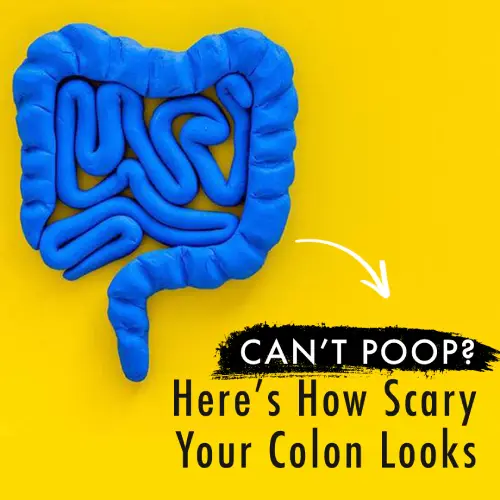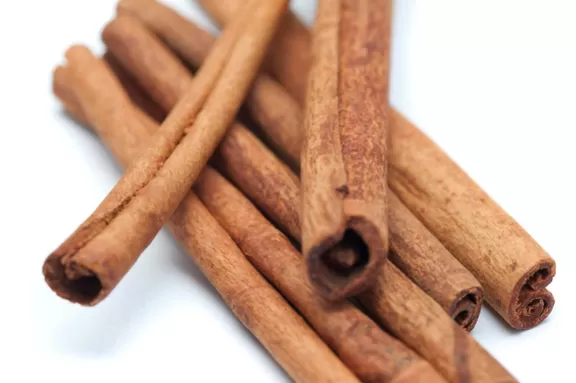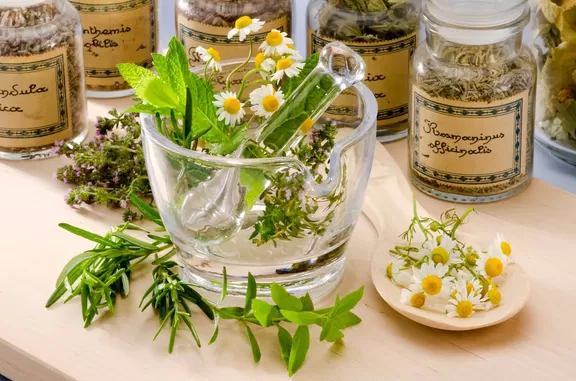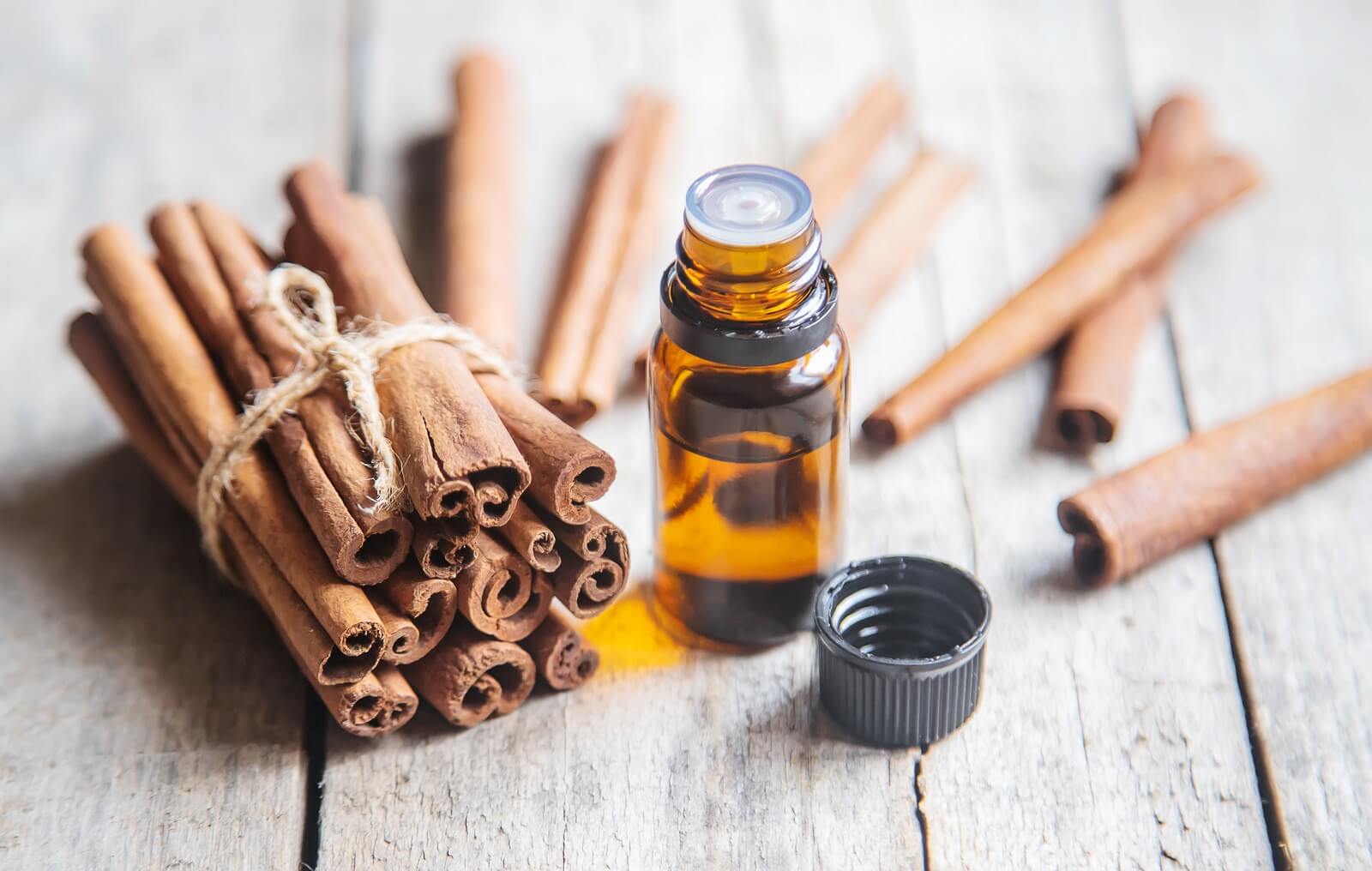
Cinnamon can be used to help relieve painful, inflamed hemorrhoids. It would be best to use an essential oil of cinnamon bark, apply it to a carrier base like coconut oil, and apply it to external hemorrhoids.
Cinnamon can help hemorrhoids in four primary ways:
- Improve wound healing
- May reduce inflammation
- Provide pain relief
- Provide antimicrobial action
If you want to take cinnamon bark powder internally to help with inflammation and pain relief, you should know that it is contraindicated, i.e. not recommended, if you are constipated. And, since constipation is one possible root cause of hemorrhoids, this may make internal use of this herb not a prudent course of action. Find out more about cinnamon & constipation here.
If I wanted to get the benefits of cinnamon for hemorrhoids, I would also pair it with another natural therapy that delivers the same benefits: peppermint essential oil. Also, I would want to use an astringent herb like witch hazel to help shrink and contract the hemorrhoids simultaneously.
By using more than one herbal approach, you may arrive at a synergistic therapeutic advantage for this condition.
In this article we will be discussing the research verifying the above claims that cinnamon oil can provide these three key benefits. At the end of this article, we will also discuss a powerful natural approach to getting rid of hemorrhoids.
Side Effects & Dosage Guidelines for Cinnamon
Cinnamon is of course a spice that has a long history as a medicinal herb and culinary ingredient. And, it is generally quite safe; however, there are some caveats to that. If you want to use cinnamon medicinally, Herbsey has an entire article reviewing the side effects and dosage guidelines for this common spice.
Get more information on this topic here: Cinnamon Side Effects and Dosage Guidelines.
Naturally Treat Hemorrhoids in 48 Hours
Jessica Wright’s unique 5-step, all-natural approach to hemorrhoid treatment delivers permanent relief. Heal hemorrhoids in 48 hours, and eliminate the root cause in 30 to 60 days.
Benefit from Jessica’s 12 years of research; her book is backed by a 60 day, 100% money back guarantee.

Cinnamon as a Wound Healer
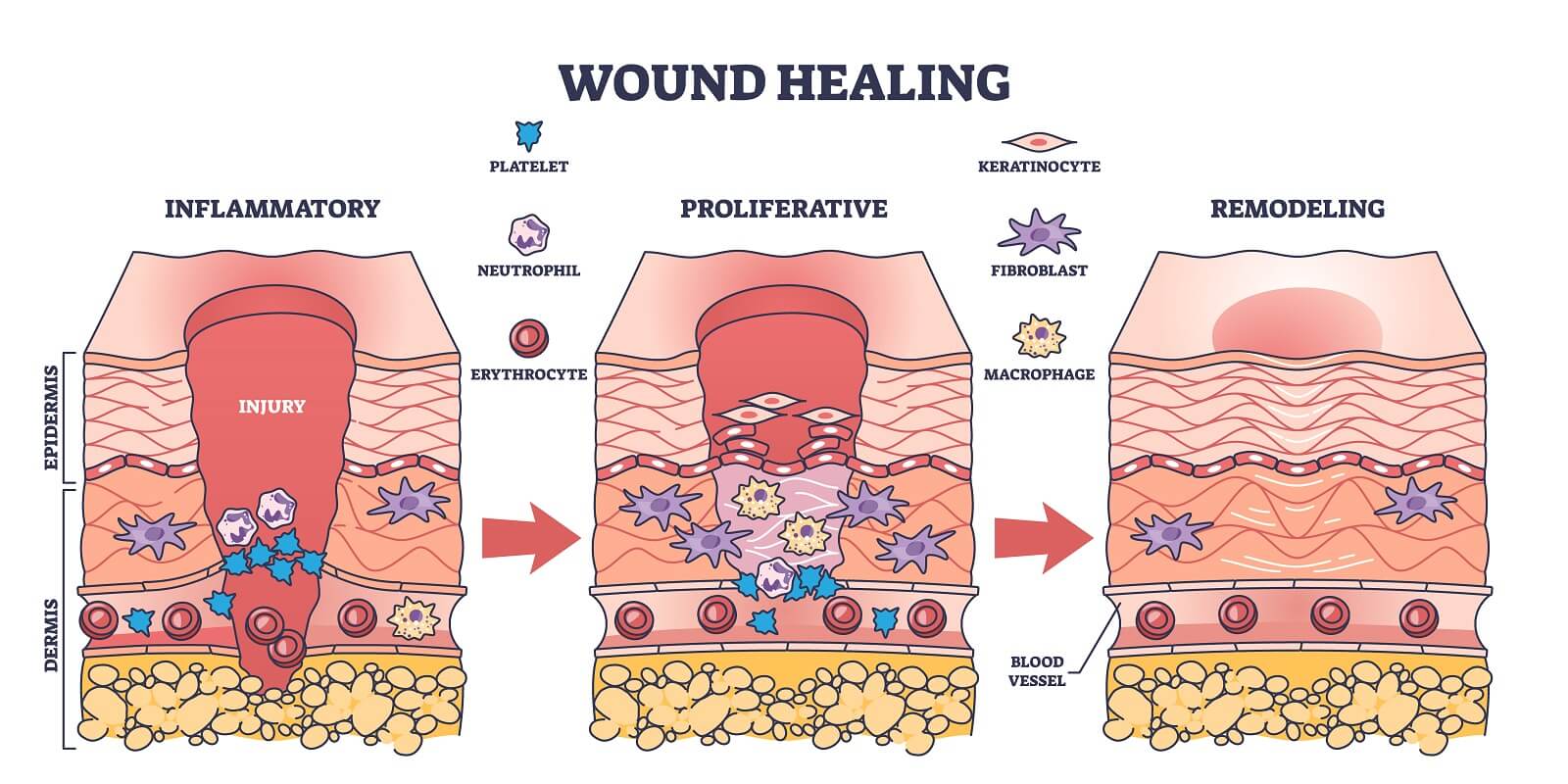
Cinnamon helps to speed up this process, which can be divided into the 3 phases detailed in this picture. Although, the effects on inflammation are somewhat conflicting in studies, it would not be surprising if this herb also worked well to stymie inflammation!
A 2012 study in Veterinarni Medicina(source 1) looked at how Ceylon cinnamon (Cinnamomum verum, Cinnamomum zeylanicum) would heal excision wounds in rats. An ethanolic (20%) extract of the cinnamon was used. Rats receiving the cinnamon were given ointment with either 1.5% or 3% cinnamon extract.
The study results showed that the ointment with 3% cinnamon extract performed the best, having a wound size of 2.2 mm on day 14. In comparison, rats just given a placebo ointment alone had a wound size of 4.89 mm. These results were highly statistically significant.
The study’s analysis found that cinnamon extract helped to quicken the wound healing process; specifically increasing epithelialization (that is, the process of new cells covering the stripped surface of the wound).
The author’s concluded: Thus, this study demonstrates that Ceylon cinnamon may be effective in stimulating the enclosure of wounds.
Having bleeding hemorrhoids can pose a risk for fecal bacteria to cause an infection; and how an herb can help with wound healing when an infection is present is important to consider. One study that looked at how cinnamon essential oil would affect infected wounds was published in 2019 in The Kaohsiung Journal of Medical Sciences.(source 2)
The study used mice as subjects and surgically gave them wounds which were subsequently inoculated with Staphylococcus aureus and Pseudomonas aeruginosa. Wounds given to the mice were treated with Ceylon cinnamon essential essential oil mixed with ointments at either a 2% or 4% concentration.
The study found the topical application of the cinnamon oil quickened the wound healing process, promoted granulation tissue (a type of new connective tissue with microscopic blood vessels that protects wounds) formation, and balanced inflammatory cell infiltration. This resulted in a faster transition between the wound healing phases of inflammatory and proliferative.
The cinnamon oil also improved the antioxidant ability of granulation tissue and upregulated the growth factors VEGF, FGF-2, and IGF-1 expression.
As the charts below will indicate (which were taken from this study), the cinnamon oil ointments drastically improved the rate of wound closure and reduction of bacteria. The first chart shown shows the wound closure, the second shows the reduction of bacteria in the wounds.
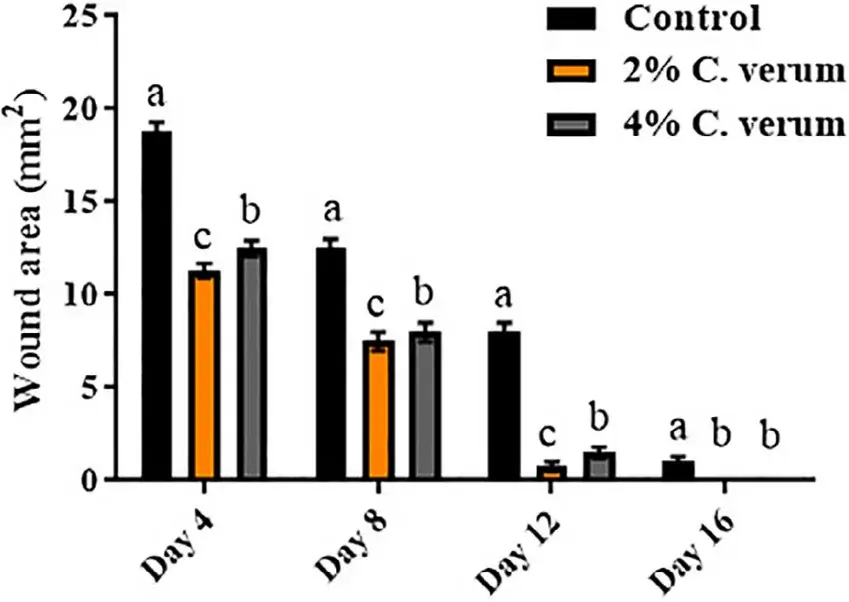
Image used under a Creative Commons License (CC BY-NC-ND 4.0); image source: https://doi.org/10.1002/kjm2.12120.
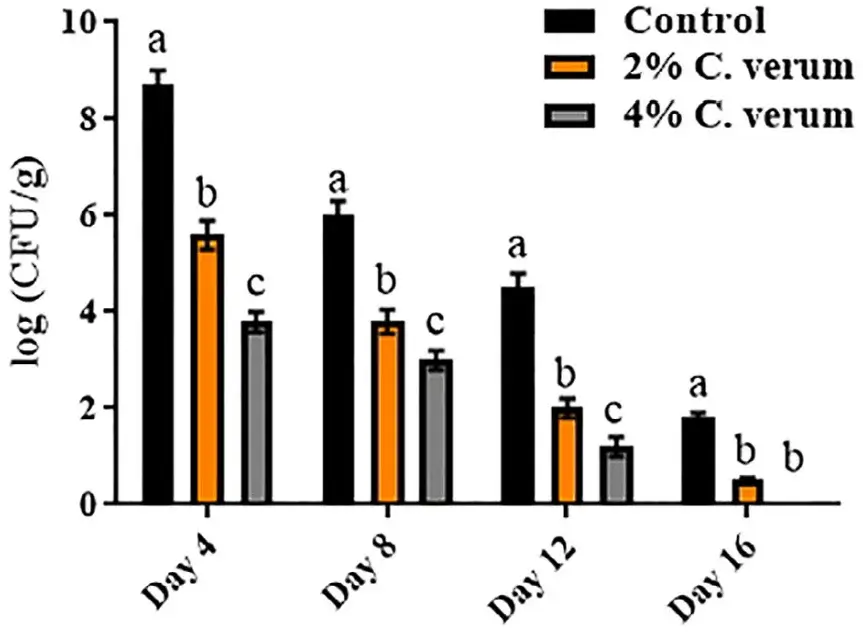
Image used under a Creative Commons License (CC BY-NC-ND 4.0); image source: https://doi.org/10.1002/kjm2.12120.
The aforementioned studies on wound healing were performed on animals, but a 2014 study in the Journal of Integrative Medicine(source 3) was conducted on women who had episiotomy (a surgical cut made at the opening of the vagina during difficult childbirth) incisions. The study’s purpose was to see how cinnamon affected perineal pain and healing of the episiotomy incisions.
The study used an ointment with a water/alcohol extract of cinnamon. The women in the study received 2 mL of cinnamon ointment or placebo every 12 hours for 10 days.
The study found that the cinnamon ointment reduced pain and improved wound healing. The study concluded that Cinnamon can be used for reducing perineal pain and improving healing of episiotomy incision
.
Samuel Bart’s Digestive Health Solution
Samuel Bart has always been passionate about plants and their ability to keep us healthy. He has put together some of the best natural ways that could help anyone support a healthy digestive system.
Samuel perfected an easy, yet powerful formula, which consists of amazing ingredients. Bart’s supplement is backed by a ironclad 60-day, money back guarantee.

How Cinnamon Impacts Inflammation
A systematic review of studies on cinnamon and inflammation was published in 2020 in Complementary Therapies in Medicine.(source 4) In total, 12 studies were included in this meta-analysis.
The dosage of cinnamon in these studies ranged from 1.5 to 4 g/day. This review found that cinnamon caused the following effects:
- A reduction of C-reactive protein (C-reactive protein is a protein produced by the liver which increases when there is inflammation in the body).
- A reduction in malondialdehyde (malondialdehyde is commonly known as a marker of antioxidant status and oxidative stress in cancer patients).
- A slight decrease in interleukin-6 (interleukin-6 is produced at the site of inflammation in response to tissue injury and infections and has a key role in the acute phase of inflammation).
- It was associated with an increase in the total antioxidant capacity.
The study concluded that cinnamon supplementation could increase the efficacy of other treatments in the reduction of oxidative stress and inflammation.
A 2022 study in BMC Complementary Medicine and Therapies(source 6) looked at the anti-inflammatory ability of both cinnamon and clove essential oils. The study took the plant oils and created nanogels (NG) with them. The study abbreviates cinnamon-NG and clove-NG.
The study found that cinnamon-NG especially had anti-inflammatory ability. Pictured below is a chart showing how cinnamon-NG was able to reduce rat paw swelling (swelling is known as edema).
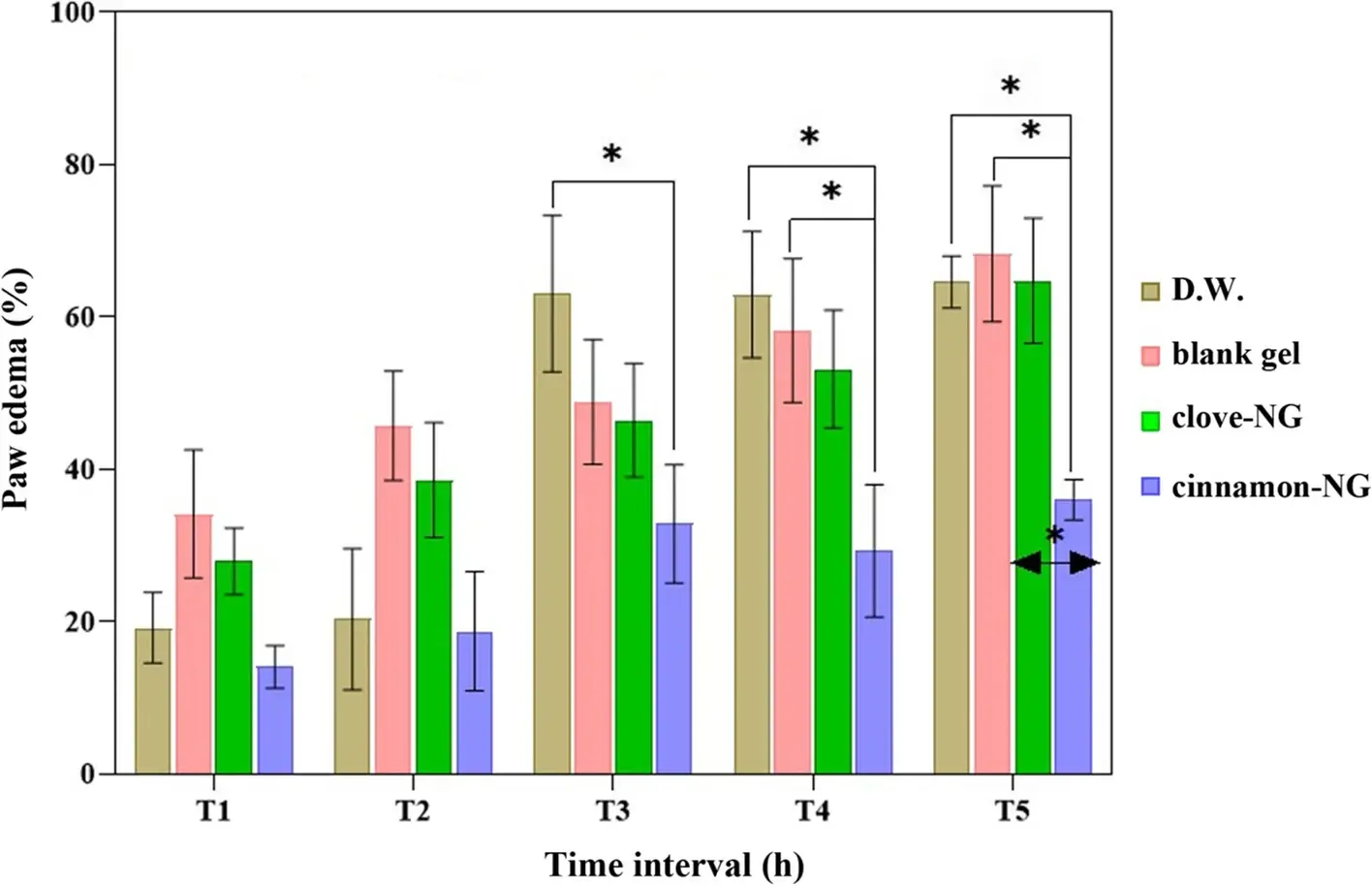
Images used under a Creative Commons License (CC BY 4.0). Original study source: DOI: https://doi.org/10.1186/s12906-022-03619-9.
A 2023 umbrella review of cinnamon (in which inflammation was analyzed) was published in 2023 in Nutrition, Metabolism and Cardiovascular Diseases.(source 5) An umbrella review is a review of systematic reviews or meta-analyses; essentially it is an overview of reviews. Umbrella reviews are thought to be some of the highest levels of evidence available in medicine.
This umbrella review found that cinnamon did not have any effect on C-reactive protein or malondialdehyde. There was an improved total antioxidant capacity in people with polycystic ovary syndrome and type 2 diabetes.
Dr. John Herzog (MD)
Dr. John Herzog, a "survival surgeon" from Maine explains what home remedies work best in a crisis situation.
This may be important in the event you require first-aid or are in an emergency situation without easy access to a hospital. Dr. John Herzog has assembled a large collection of home remedies for such scenarios.

Cinnamon & Pain Relief
The aforementioned 2022 study in BMC Complementary Medicine and Therapies(source 6) also looked at the pain response changes of both cinnamon and clove essential oils. The study took the plant oils and created nanogels (NG) with them. The study abbreviates cinnamon-NG and clove-NG.
The study found that cinnamon-NG especially had pain relief ability. The study looked at how cinnamon-NG was able to reduce pain in rats (scientific term: anti-nociceptive; nociception is the process of feeling pain) as evidenced by a reduction in the rat’s licking time. The study used the formalin test to evaluate pain response.
According to the 2013 Encyclopedia of Pain(source 7) the formalin test is defined as:
The formalin test refers to the quantification of characteristic nociceptive behaviors that occur in response to subcutaneous (s.c.) or intradermal injection of a dilute solution of formaldehyde in 0.9% saline, typically into the dorsal or plantar hindpaw of rodents.
Encyclopedia of Pain [2013]
The image below, taken from this study, shows the pain relieving effects of the nanogels in comparison with the control of distilled water. The blue bar, representing cinnamon nanogel, clearly shows the most pain reduction compared to the other treatments. And, this difference was statistically significant. Note that nociceptive score is indicated on the Y-axis and is refering the feeling of pain.

Images used under a Creative Commons License (CC BY 4.0). Original study source: DOI: https://doi.org/10.1186/s12906-022-03619-9.
A 2023 study published in the European Review for Medical & Pharmacological Sciences(source 8) looked at the pain relieving ability of cinnamon bark essential oil on rats given sciatic nerve injury. The study found that cinnamon bark oil did indeed reduce pain in these rats. They state the following in their conclusion:
Our study findings revealed the beneficial effects of CBO in rats with sciatic nerve damage. Further research must be done on this essential oil’s use in treating nerve injury.
European Review for Medical & Pharmacological Sciences [27.12 (2023)]
Claire Goodall’s Amazing Guide
Clair Goodall is a bee-obsessed, natural medicine convert from Minnesota (USA). And, she does keep bees!
Clair has created 350+ page book documenting how to replace the toxic products and medications in your home with healthier, all-natural alternatives.

Cinnamon is Antimicrobial
Cinnamon is capable of hindering bacterial and fungal pathogens that may try to infect damaged anal skin. For this reason, cinnamon should help to stave off infection; helping to ensure the healing of bleeding hemorrhoids.
Effects on Bacterial Pathogens
There are many different types of bacteria that cause infections. And there appears to be a lot of research showing cinnamon is able to stop many bacteria. It can be inferred that cinnamon essential oil has a broad spectrum antibacterial ability from all the studies on common bacterial pathogens showing killing ability. Let’s take a look at a few of these studies!
- A 2016 study in Food Control(source 9) showed that cinnamon essential oil killed Escherichia coli (E. coli) and Staphylococcus aureus (S. aureus).
- A 2016 study in JAPS: Journal of Animal & Plant Sciences(source 10) showed that cinnamon essential oil at or below a 0.1% concentration killed E. coli, S. aureus, Bacillus subtilis, Salmonella typhi, Klebsiella pneumonia, Pseudomonas aeruginosa, and Bacilluspumilus.
- Concerning cinnamon extract, a 2008 study in the Al-Nahrain Journal of Science(source 11) showed that a water based extract of cinnamon killed all five isolates of Staphylococcus aureus at a 30% concentration.
Effects on Fungal Pathogens
Possibly the fungi of most concern when it comes to the anal area is Candida. Candida can cause anal yeast infections; which can be very distressing. Candida, if you did not know, is the genus of fungi that cause the majority of yeast infections. It is a very prevalent microorganism, and when presented with an opportunity, it can overgrow and cause disease.
Candida Hub is our sister site, and has two articles on this topic:
Heal Hemorrhoids Naturally in 48 Hours
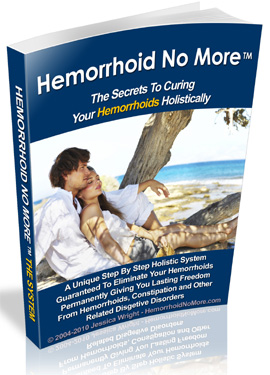
If you have tried "everything" to treat hemorrhoids, including surgery, but it didn’t work—your’re not alone. Jessica Wright experienced this same hardship due to hemorrhoids. But, with extensive research and understanding of natural medicine, she developed a solution to permanently end her hemorrhoids.
Jessica Wright wrote an entire book detailing exactly how to replicate her success. Also, it appears "Jessica Wright" is probably a pen name for a woman—and author—named Linda Allen. Linda suffered from recurrent yeast infections as well, maybe at the same time as she had hemorrhoids. She turned to natural medicine for answers when medical doctors and their solutions could not help.
Jessica’s story is one of severe and chronic hemorrhoids. It involves routine doctor’s visits, prescription medications / creams, significant suffering from hemorrhoids, and even a two hour hemorrhoids surgery (stapled hemorrhoidopexy). Yet, 12 years of these treatments didn’t resolve Jessica’s hemorrhoids.
Despite these setbacks, Jessica didn’t give up; instead, she turned to natural medicine and diligent research. Skipping to the end of Jessica’s story, she would develop a natural method to treat hemorrhoids that worked brilliantly.
After Jessica put together her treatment protocol and used it, she found her hemorrhoids completely disappeared. And, they stayed gone. Something her doctor was not able to do. Yet, all it took was the right natural therapeutic approach.
Jessica also gave her treatment approach to others; and, they experienced the same exceptional results. Typically, Jessica’s system provides dramatic relief of hemorrhoids in just 48 hours. And, the root cause of hemorrhoids is fixed within 30 to 60 days.
A company selling hemorrhoid symptom products does not want their customer base diminished. Consequently, unpatentable natural medicine does not get much attention or publicity.
So, how can you know if Jessica Wright’s claims are legitimate and not a scam? That is a great question. Here are 3 important reasons why Jessica’s book is legitimate:
- It is published by a large U.S. based company (Located in Idaho) known as ClickBank. ClickBank handles all the sales and refunds of many products like Jessica’s. They do business in many countries; and, have been in business for many years.
- ClickBank provides a 60 day, 100% money back guarantee on all their products, Jessica’s book included.
- If you are not satisfied with Jessica’s book you can simply contact ClickBank (they make it very easy) for a full refund.
Jessica’s story is more in-depth than this concise overview. And, there are additional bonuses Jessica provides with her book. If you’d like to find out more about Jessica’s personal story or her hemorrhoid treatment; you can learn more at Jessica Wright’s website.
About the Author
Nick Gross is a natural medicine enthusiast who has been researching and writing about natural medicine since 2008. Nick is primarily a web developer, but also researches and authors written and video content about natural health. Nick has a bachelor’s degree in Management Information Systems from the University of Northern Iowa.
More on Nick GrossImportant Disclosures & Disclaimers
It is important to use the information you find on Herbsey.com in the right way. Also for legal reasons, these disclaimers and disclosures are necessary. For further information about each, feel free to click the link provided to the page on this website that provides more information.
Medical Disclaimer
The information on this website is not a prescription for anyone. This information is for informational or educational purposes only, and is not a substitute for professional medical advice or consultations with healthcare professionals.
Advertisement Disclosure
Some of the links provided on this article and website are affiliate links. If you purchase a product after clicking on these links, Herbsey.com will earn a commission. Herbsey.com promotes various products through advertisement and text links. For more information: Our Advertisements.



